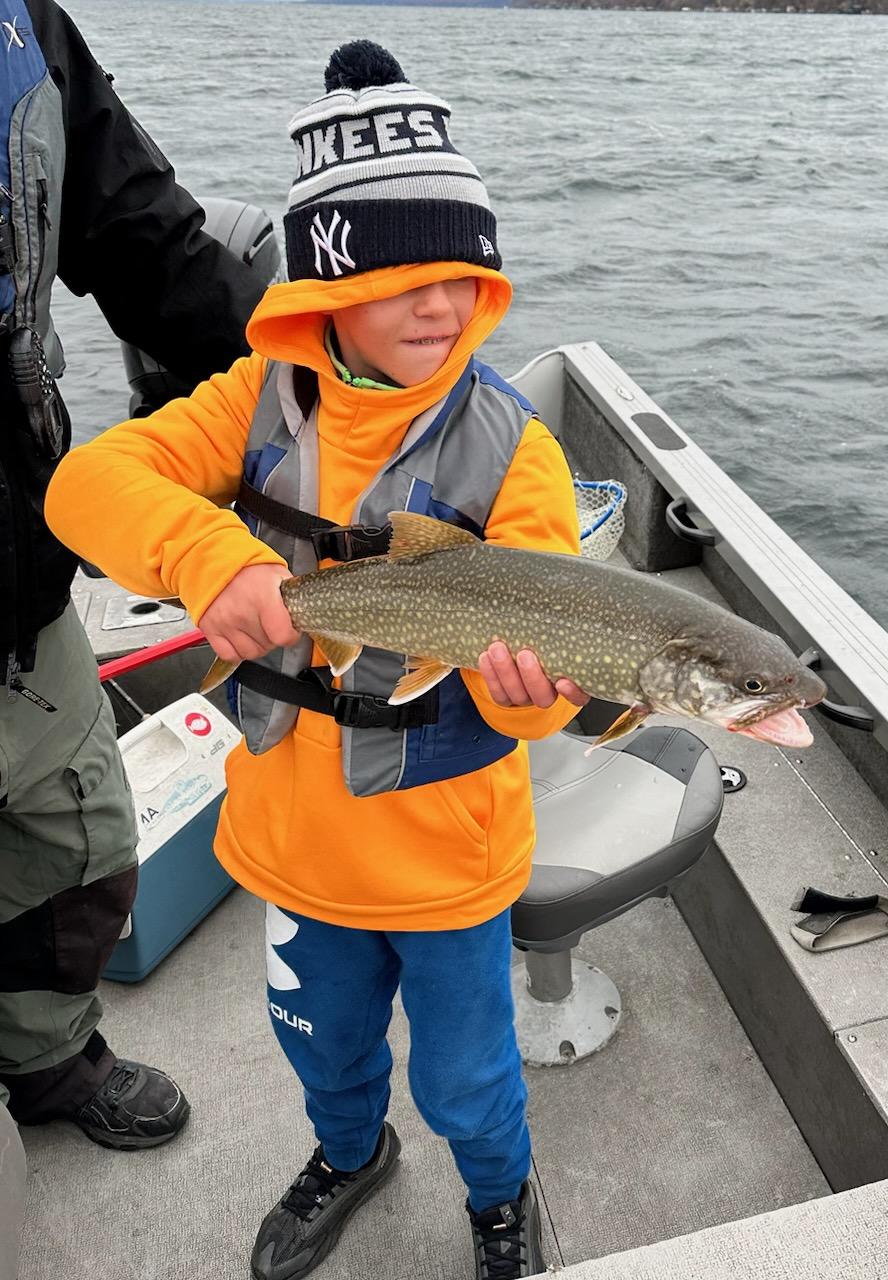Cayuga Lake out of Myers Park 11/6 AM
Guided Matt and his son Connor for a short half-day starting at around 8:30 am. It was in the upper-30s this morning and felt every bit of it. Matt’s a longtime client of mine and his son had never caught a fish before. Connor just turned 9-years old, which is about as young a child as I would typically take out. Connor did a good job today dealing with the cold and wind. Fishing remains very good for lake trout on Cayuga Lake. Most fish that we were catching over the past two weeks were post-spawn. Today, the guys caught a nice batch of younger non-spawners. Bait was abundant and we headed in a little early today. Connor caught his first laker all on his own and lost another nice fish maybe 30′ under the boat. Fun day, but cold and windy. Water temp on top is around 53 degrees. The foliage is mostly done with. Lake level is still good on Cayuga for launching everywhere as far as I could tell.
Connor with his first fish!

Another shot!

I talked to someone at DEC to see when launches were scheduled to be removed from Skaneateles and Otisco Lakes. The tentative plan in sometimes during the week of November 13th. Boots/hip-waders suffice at Skaneateles. When the docks are out, the best thing to do at Otisco is either have a buddy with boots/waders or launch at one of the private marinas.
Region 8 did a lot of work on Seneca Lake this past summer and fall. Summer lake trout nettings showed plenty of lake trout in the lake, although most were north of Lodi/Severne Point. Overall numbers were similar to the last netting but the size and condition of the fish was improved. No gobies were found in any lake trout stomachs. The lakers were still feeding mostly on alewives and sculpin. Fish ran as large as 10 to 13lbs. Lamprey wounding was down. Treatments are scheduled for 2024. 15 to 20 percent of the lake trout were wild fish.
Forage netting showed round gobies present lake-wide. Given the size of the round gobies, it’s estimated that they’ve been in the lake for at least 3 years. They still are nowhere near their peak in abundance. No smelt were found. Plenty of alewives were found representing several year classes. We’ll get more info once it gets processed – I’m sure we’ll see a good summary in the diary summaries next spring.
